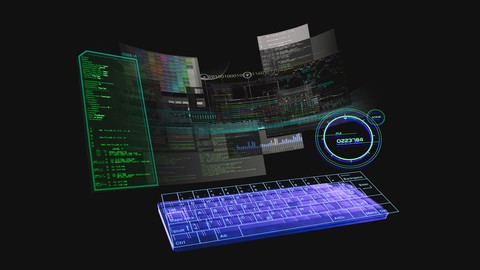The involuntary abnormal postures could be a sign of dystonia
Contributed by Dr. Kishor Rao, Consultant Neuro Surgeon, Functional Neuro surgery and Spine Surgeon, Columbia Asia Hospital Sarjapur Road
Everyone likes to have control over their lives or at least over their bodies. However, at times, things do get out of control but it’s more disturbing when it is about our health and our body. This happens in some of those conditions in which our muscles behave involuntarily. One such condition is known as dystonia, which is a neurological movement disorder syndrome. In this disorder, the person’s muscles consistently contract involuntarily leading to abnormal fixed postures, or twisting and repetitive or sign of dystonia movements. While dystonia is a physical problem, it’s after affects can even be seen on a person’s mental health as the person starts to avoid social presencesign of dystonia.
Dystonia can affect one to several parts of the body. The muscle spasms can be mild or severe and can be painful. This condition then interferes with the performance of day-to-day tasks of the person. There is no cure of dystonia as such but some medications can help in improving the symptoms. sign of dystonia Sometimes surgery is done to regulate or disable the nerves or certain brain regions in people with severe dystonia.

Important Announcement – EasyShiksha has now started Online Internship Program “Ab India Sikhega Ghar Se”

SYMPTOMS:
Symptoms of dystonia can range from being very mild to very severe. Mostly the symptoms of dystonia progress through stages. The ways in which dystonia affects a person also varies from one individual to another. Muscle contractions in this condition can start in one area such as your leg, neck or arm.
Some early symptoms of dystonia are:
- A “dragging leg”
- Cramp in the foot
- Involuntary pulling of the neck
- Uncontrollable blinking
- Speech difficulties
Tiredness or stress tend to not only initiate the symptoms but also sign of dystonia worsen them in some cases. The constant muscle contractions often end up leaving the people with dystonia in pain and in the state of exhaustion.
Important Announcement – EasyShiksha has now started Online Internship Program “Ab India Sikhega Ghar Se” during this lockdown.
In childhood, the symptoms of dystonia are usually observed first in the foot or hand and then a progression to the rest of the body is seen. The rate of progression usually slows down after adolescence. In early adulthood, dystonia usually starts in the upper body and then the symptoms slowly progress. The early adulthood dystonia’s typically affect either one part of the body or two or more adjacent body parts i.e. they are either focal dystonia’s or segmental dystonia’s.
Top Courses in Software Engineering
More Courses With Certification
Dystonia has also been noticed to occur during a specific action like handwriting. It mostly gets worse due to stress, fatigue or anxiety and becomes more noticeable over time.
The areas of the body dystonia affects include:
- Neck: This is referred to as cervical dystonia in which the contractions cause one’s head to twist and turn to one side, or pull forward or backward, sometimes resulting in pain.
- Eyelids: Uncontrollable, involuntary spasms and repetitive blinking can cause one’s eyes to close (blepharospasms) and cause issues with the vision, making it difficult to see. Spasms are generally not painful but tend to enhance in the presence of bright light, due to stress or due to interaction with people. The eyes are also likely to feel dry.
- Jaw or tongue: This is called oromandibular dystonia, where one is likely to experience slurred speech, drooling, and also face problems in chewing or swallowing. Oromandibular dystonia can be painful and mostly happens along with with cervical dystonia or blepharospasms.
- Voice box and vocal cords: This is called spasmodic dystonia, in which one might have a tight or whispering voice.
- Hand and forearm: These are among those types of dystonia that occur only when the person does an activity repetitively like writing (writer’s dystonia) or playing a particular musical instrument (musician’s dystonia).
CAUSES
Just as the symptoms of dystonia differ from person to person, so can its causes. In most of the cases of dystonia, there is no specific cause that has been deciphered. Hence there is no particular cure also for it yet. However, this disorder seems to be related to a problem in the basal ganglia which is the area of the brain that is responsible for starting muscle contractions. The problem consists of the way the nerve cells communicate. Thus the cause of dystonia is expected to involve altered nerve-cell communication in various regions of the brain. Some forms of dystonia are even believed to be genetic and are inherited.
Dystonia also can also occur as a symptom of other disease or condition at times. Some of these diseases include:
- Parkinson’s disease
- Huntington’s disease
- Wilson’s disease
- Traumatic brain injury
- Birth injury
- Stroke
- Brain tumor or some disorders that develop in people with cancer (paraneoplastic syndromes)
- Oxygen deprivation or carbon monoxide poisoning
- Infections like tuberculosis or encephalitis
- Reactions to some medicines or heavy metal poisoning
Some initial signs of dystonia are usually mild, not frequent and linked to a particular activity. If someone is regularly experiencing involuntary muscle contractions, then they must visit the doctor.
Empower your team. Lead the industry
Get a subscription to a library of online courses and digital learning tools for your organization with EasyShiksha
Request NowDepending on the affected area and the type of dystonia, some complications that come with dystonia are:
- Physical disabilities that hamper daily activities or specific tasks
- Difficulty with vision due to the effect on your eyelids
- Struggle with jaw movement, speech or swallowing
- Pain and fatigue because of regular contraction of muscles
- Depression, anxiety and social withdrawal
Dystonia is not a very well-known disorder and hence it needs all the more attention. While it cannot be cured but you can certainly stay away from the possible causes. Most importantly, one must stay aware of one’s body and if you feel any involuntary unusual activity in your body, you must seek out medical assistance so that you can avoid the serious complications that dystonia can have
For information related to technology, visit HawksCode and EasyShiksha
ALSO READ: five-ways-to-invest-in-5g
Get Course: International-Finance-for-Beginners





















































































